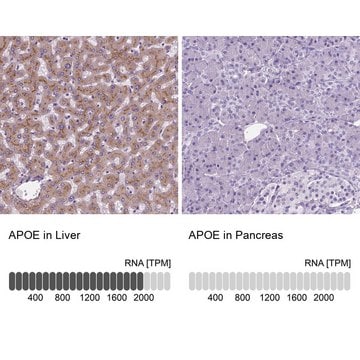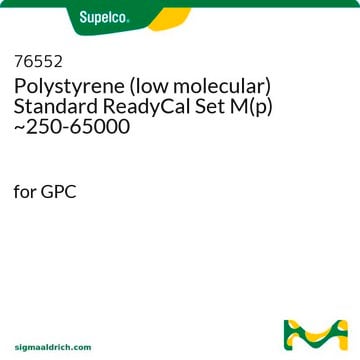General description
Low-density lipoprotein receptor-related protein 8 (UniProt Q924X6; also known as ApoER2, Apolipoprotein E receptor 2, LRP-8) is encoded by the Lrp8 (also known as Apoer2) gene (Gene ID 16975) in murine species. Murine ApoER2/LRP-8 is an 110-kDa type I membrane receptor initially produced with a signal peptide sequence (a.a.1-28). The mature receptor has a large extracellular region (a.a. 29-858), a transmembrane domain (a.a. 859-881), and a cytoplasmic tail (a.a. 882-996). ApoER2 belongs to the LDLR family of membrane glycoproteins whose members also inculde the low-density lipoprotein receptor (LDLR), the very-low-density lipoprotein (VLDL) receptor, the LDLR-related protein (LRP), and Megalin (LRP-2). The overall extracellular structural features are similar among all LDLR family members. ApoER2 contains a cluster of eight cysteine-rich Complement-type/LDLR Class A repeats that mediate ligand-binding, followed by two EGF-like repeats (a.a. 364-408 & 409-448) and a cluster of five cysteine-poor LDLR Class B repeats (a.a. 495-714) that contains YWTD motifs involved in the pH-dependent ligands dissociation in endosomal compartments. ApoER2 and VLDLR both function as receptor for reelin, a glycoprotein that is mainly secreted by Cajal Retzius neurons in the marginal zone and plays an essential role in the formation of the layered neocortex. Immunohistochemical staining reveals differential localization of ApoER2 and VLDLR in the developing mouse cerebral cortex, with VLDLR being localized to the distal portion of leading processes in the marginal zone (MZ) and ApoER2 mainly localized to neuronal processes and the cell membranes of multipolar cells in the multipolar cell accumulation zone (MAZ). The differential expression pattern may therefore allow distinct reelin actions on migrating neurons during both the early and late migratory stages in the developing cerebral cortex.
Specificity
Clone 4H3E6 (3E) detected ApoER2 expression in embryonic and neonatal brain tissues from wild-type, but not Apoer2-knockout mice (Hirota, Y., et al. (2015). J. Comp. Neurol. 523(3):463-478).
Immunogen
Epitope: cytoplasmic domain
GST-tagged recombinant mouse ApoER2 cytoplasmic tail lacking the 59-a.a. exon 19-coded sequence (Hirota, Y., et al. (2015). J. Comp. Neurol. 523(3):463-478).
Application
Anti-ApoER2, clone 4H3E6, Cat. No. MABN1872, is a highly specific rat monoclonal antibody that targets ApoER2 and has been tested in Immunofluorescence and Western Blotting.
Immunofluorescence Analysis: A 1:1,000 dilution from a representative lot detected ApoER2 expression in 4% paraformaldehyde-fixed, OCT-embedded frozen embryonic E17.5 mouse neocortex tissue section (Courtesy of Yuki Hirota, Ph.D., Keio University, Japan).
Immunofluorescence Analysis: A representative lot detected developmental stage-dependent ApoER2 expression patterns among 4% paraformaldehyde-fixed, OCT-embedded frozen embryonic (E13.0 to E18.5) and neonatal (P0) brain tissues from wild-type, but not Apoer2-knockout mice (Hirota, Y., et al. (2015). J. Comp. Neurol. 523(3):463-478).
Western Blotting Analysis: A representative lot detected HA-tagged full-length mouse ApoER2 exogenously expressed in HEK293T cells (Hirota, Y., et al. (2015). J. Comp. Neurol. 523(3):463-478).
Research Category
Neuroscience
Quality
Evaluated by Western Blotting in embryonic E16 mouse brain tissue lysate.
Western Blotting Analysis: 0.5 µg/mL of this antibody detected ApoER2 in 10 µg of embryonic E16 mouse brain tissue lysate.
Target description
~110 kDa observed. 106.8/109.8 kDa (isoform 1 mature/pro-form) and 93.35/96.35 kDa (isoform 2 mature/pro-form) calculated. Uncharacterized bands may be observed in some lysate(s).
Physical form
Format: Purified
Protein G purified.
Purified rat IgG2a in buffer containing 0.1 M Tris-Glycine (pH 7.4), 150 mM NaCl with 0.05% sodium azide.
Storage and Stability
Stable for 1 year at 2-8°C from date of receipt.
Other Notes
Concentration: Please refer to lot specific datasheet.
Disclaimer
Unless otherwise stated in our catalog or other company documentation accompanying the product(s), our products are intended for research use only and are not to be used for any other purpose, which includes but is not limited to, unauthorized commercial uses, in vitro diagnostic uses, ex vivo or in vivo therapeutic uses or any type of consumption or application to humans or animals.








